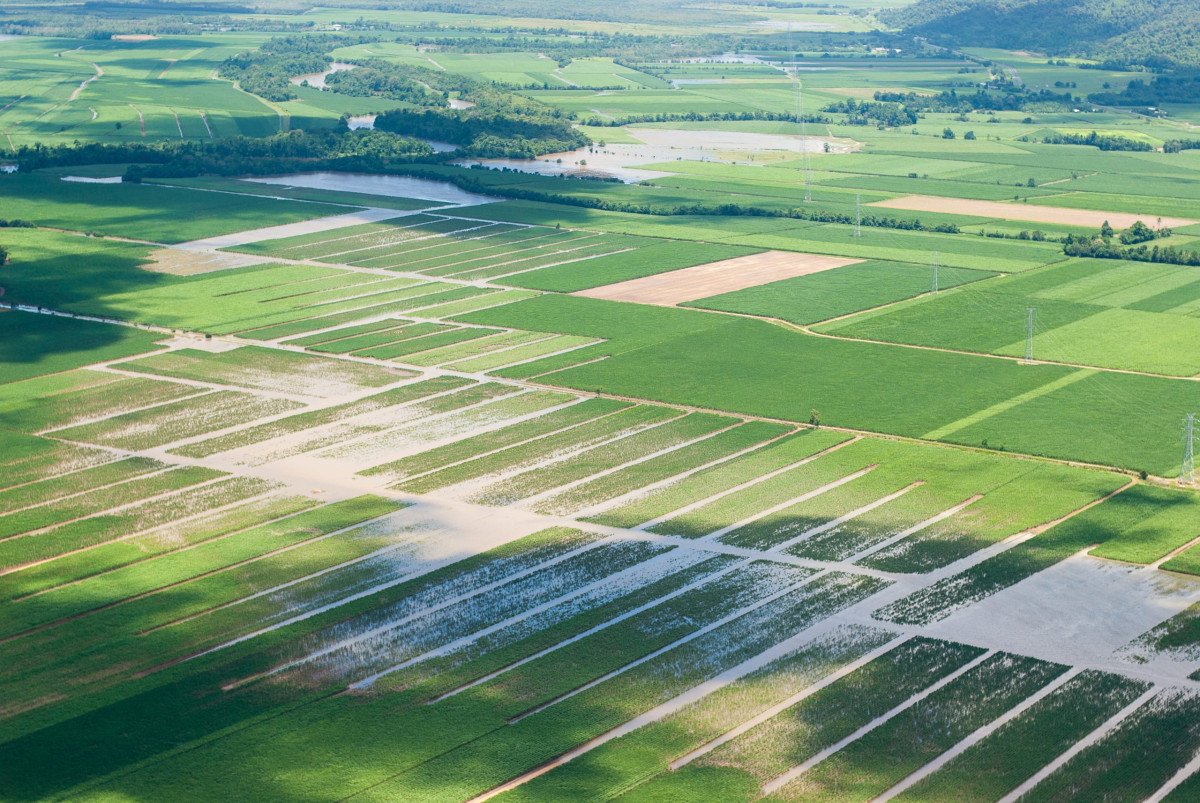Dissolved nutrients

How much anthropogenic dissolved nutrient (nitrogen and phosphorus species) is exported from Great Barrier Reef catchments? [Q4.4]
Authors: Ian P Prosser1, Scott N Wilkinson2
Affiliations: 1Centre for Applied Water Science, University of Canberra, 2CSIRO Environment, Canberra

Evidence Statement
The synthesis of the evidence for Question 4.4 was based on 61 studies undertaken mostly in the Great Barrier Reef and published between 1990 and 2022, including a High diversity of study types (54% observational, 23% modelling, 11.5% reviews and 11.5% combined), and with a High confidence rating (based on High consistency and High overall relevance of studies).
Summary of findings relevant to policy or management action
There is a strong body of evidence showing exports of anthropogenic[1] dissolved inorganic nitrogen are at least twice as high as pre-development rates, mainly as a result of fertiliser-adding land uses. Monitoring and modelling show that the Herbert, Burdekin, Fitzroy, Johnstone, Mulgrave-Russell, Tully and Haughton basins are the largest exporters of total dissolved inorganic nitrogen to the Great Barrier Reef, each exporting an annual average load of over 500 tonnes per year. Anthropogenic exports of dissolved inorganic nitrogen are greatest in basins dominated by sugarcane; these basins include those in the Wet Tropics, Burdekin and Mackay Whitsunday Natural Resource Management regions. Other land uses including urban, bananas and other horticulture contribute smaller amounts. Surface runoff, subsurface movement and groundwater are all significant transport pathways of dissolved nutrients to the Great Barrier Reef, however the spatial and temporal variation of these pathways has not been fully quantified. Most export occurs in the wet season, with chronic and continuously high exports in wet tropical catchments. Dissolved nutrient loads are less correlated with flood discharge than particulate nutrient loads. Most research has examined dissolved inorganic nitrogen, however the export of other dissolved nutrients including phosphorus may be substantial and this is an area that warrants further assessment.
[1] The end-of-catchment anthropogenic load of dissolved nutrients is calculated as the current end-of-catchment load minus the predicted end-of-catchment pre-development load.
Supporting points
- In 11 of the 35 Great Barrier Reef basins the current total dissolved inorganic nitrogen exports are estimated to be over double the pre-development rate. These basins are in the Wet Tropics, Burdekin, Mackay Whitsunday and Burnett Mary regions.
- There is strong and consistent evidence of high anthropogenic dissolved inorganic nitrogen exports from basins in the Wet Tropics, Burdekin and Mackay Whitsunday regions. These basins have substantial areas of fertiliser-adding land use. Sugarcane is the biggest fertiliser-adding land use in the Great Barrier Reef catchments, but bananas and other horticulture can be locally important. Basins in the Burnett Mary region also show high anthropogenic exports per unit area, with sugarcane a major land use, although the total anthropogenic loads are not as high as other regions.
- Sugarcane contributes 42% of total dissolved inorganic nitrogen export despite it occupying just 1.2% of the Great Barrier Reef catchment area, whereas urban land use contributes 7% from 0.7% of the area and bananas 1% from <0.1% of the area. Grazing lands contribute 22% of the total dissolved inorganic nitrogen export from 73% of the Great Barrier Reef catchment area, and conservation land contributes 24% from 15% of the area, but the latter is natural not anthropogenic export. Anthropogenic load contributions of agricultural and urban land uses are much higher than those of conservation areas.
- Dissolved inorganic phosphorus concentrations are low and greatly exceeded by particulate phosphorus.
- Exports of dissolved organic nitrogen are greater than dissolved inorganic nitrogen exports in areas that have limited fertiliser application.
- The focus of nutrient export research and management has been on dissolved inorganic nitrogen and is linked to knowledge in the marine systems where there is greater clarity of the impacts of dissolved inorganic nutrient forms. However other nutrients may be important for Great Barrier Reef ecosystems. For example, dissolved organic and particulate nitrogen may also be adding to increased nutrient concentrations in the Great Barrier Reef. There is also evidence for substantially increased phosphorus exports from the Great Barrier Reef catchment area overall, and while most phosphorus is in the particulate form, it can become bioavailable in freshwater and marine environments. The impacts of these nutrient forms on Great Barrier Reef ecosystems are poorly understood, as is detailed knowledge of their anthropogenic sources.
- The Reef Water Quality Report Card 2020 estimates that ‘Moderate’ overall progress has been made toward meeting the dissolved inorganic nitrogen load reduction targets. The monitoring program should be able to start detecting improvements to export loads where long records and no compounding factors are present. For some management actions it may be several years until the benefits of management are fully realised.
- Significant improvements have been made to the Paddock to Reef Program’s SedNet model (referred to as Source Catchments) in the last few years and it now better matches observed patterns of dissolved nutrients. It provides the best available estimates of dissolved nutrient exports as a result of the consistency in approach across all 35 basins as well as the wealth of information that can be extracted from the results.










